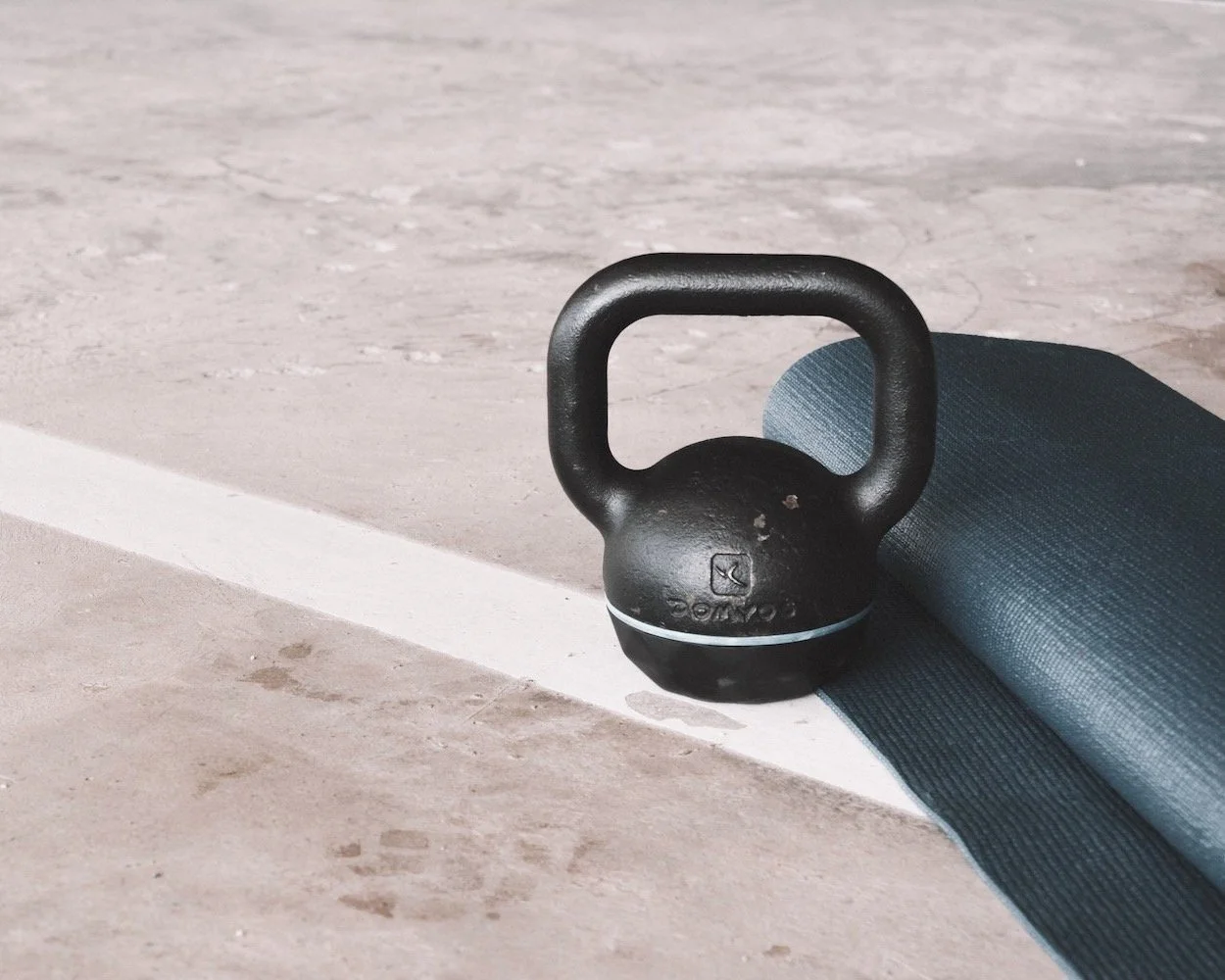Strength Train For Pain
The healing power of building muscle.
Out of all the natural pain-relief options out there, strength training might be the last on your list because of the effort and commitment required. I once felt that way too. It’s definitely the long game, and I won’t make any argument there.
I feel like the best way to talk about its transformative power is to share my own story, which began with a knee injury that changed my life.
My injury.
Unfortunately I had to learn the hard way why strength training is an absolute must for a pain-free life. Ignoring it until it was too late turned out to be one of the bigger mistakes I ever made. Eventually I opened up my mind and gave it an honest go. Quite simply that decision has dramatically improved my life.
At 40, I had a crazy bad fall at a construction site. The kind where you go flying through the air and come smashing down hard into the concrete. It was the first significant injury I had had as an adult and I was truly unprepared for what happened next.
I did not grasp that ‘recovery’ existed on a spectrum from bad to good.
I was still young enough to think I could recover from anything, but old enough for that not to happen.
My incorrect instinct was to rest, and rest some more. Which then led to me babying my knee for months. The outcome of that approach was repeating cycles of completely debilitating knee pain for almost two years. Until I woke up and figured out what I was doing wrong.
Uncovering the problem.
It was all pretty straight forward. The injury had weakened my knee and I did not have enough supporting muscle mass to continue being physically active and pain-free at the same time. I thought the way I had been living was healthy, but there were imbalances that the knee injury brought to light.
Up until then I was a peace-loving yogi. I had an active outdoor lifestyle that included a lot of biking, hiking, swimming, dancing and yoga. My core was strong, I had good balance, lean muscles, and excellent flexibility.
At the time of my injury I was teaching several hot yoga and private yoga classes each week, as well as maintaining my own personal practice.
I had no idea that my high level of flexibility was a ticking time bomb for me.
It was a huge contributing factor to the vulnerability of my knee after the fall.
I kept getting Baker’s Cysts behind my knee and the ensuing inflammation resulted in 24/7 pain. It did’t matter what I did, there was no relief. And if you have read my story, you know I don’t do pills. Each cycle of pain lasted anywhere from 4-8 weeks, so you can just imagine how much this knee issue was interfering with my life.
The solution.
Once I accepted that it wasn’t going to magically resolve on its own, I dug in and got serious about finding solutions. I did a lot of research and put together a plan.
I started using natural anti-inflammatories both internally and topically on my knee. I cleaned up my diet and cut back on yoga. But the real game changer was hiring a skilled and highly motivated personal trainer that introduced me to strength training. Nearly a decade later he is still in my life cheering me on and helping me keep my workouts fresh and challenging.
I am now in my 50s and fitter then I have ever been. And despite the permanent damage to my knee, strength training has allowed me to live pain-free and remain physically active in all the ways I love.
I’m not going to tell you its a free ride because its not. It’s a lifestyle choice. But one thats more than worth the effort.
The impacts of age.
After making this big life change, I started to observe the impacts of muscle mass loss in my aging massage clientele. I realized that the 60 and up age group that did not strength train consistently looked and felt 10-15 years older compared to those that did. They suffered from more injuries, had more chronic pain, and more health diagnoses like cancer, stroke, heart disease and diabetes. It was just so clear cut.
Building and preserving muscle mass results in a much higher quality of life.
Directly experiencing these impacts for myself as well as my clients, I wanted to find out if there was some scientific research to back up my real world observations.
Well it didn’t take long to find study after study showing how resistance training reduced pain associated with osteoarthritis, rheumatoid arthritis, migraine disorders, fibromyalgia, neuropathy, carpal tunnel syndrome, sport’s injuries, as well as chronic neck, shoulder, knee and lower back pain.
What the science says.
What I learned from reviewing the science is that strength training reduces pain in three key ways:
Intense exercise stimulates the release of endogenous pain-relieving neurotransmitters, which includes endorphins, dopamine, GABA, serotonin, and norepinephrine.
Resistance training reduces the pain from mechanical stress, like spinal compression or poor posture by increasing bone density, and promoting structural strength and stability.
Exercise that builds lean muscle mass reduces pain by enhancing metabolic energy and insulin sensitivity, which in turn inhibits both local and systemic inflammation.
Getting started.
Since my knee injury over a decade ago I have navigated my way through a car accident, sports injuries, arthritis and repetitive motion strain from my work.
Strength training has become the bedrock, on which I have built a very full and active life.
It’s truly a non-negotiable for me at this point. But that being said, I do understand how challenging it can be to kickstart a new exercise routine when you are dealing with chronic pain.
Having worked one-on-one with many clients in pain for so many years, I know how vulnerable and self-protective that can make you feel. Naturally people fear exercise will trigger more pain, and in fact it often does when not approached in the right way.
Minimize the risks.
Over the years I have learned what approaches to strength training help maximize the benefits, while minimizing the risks.
I believe the single most important focus is planned recovery time. Before you place a whole new set of demands on your body, you need to dial in a healthy rest and recovery cycle which will support a sustainable workout routine, keep injury at bay, and prevent burnout.
Can You Workout Too Much?
Learn how to workout smarter and build a recovery schedule that keeps you on track. Read more >





